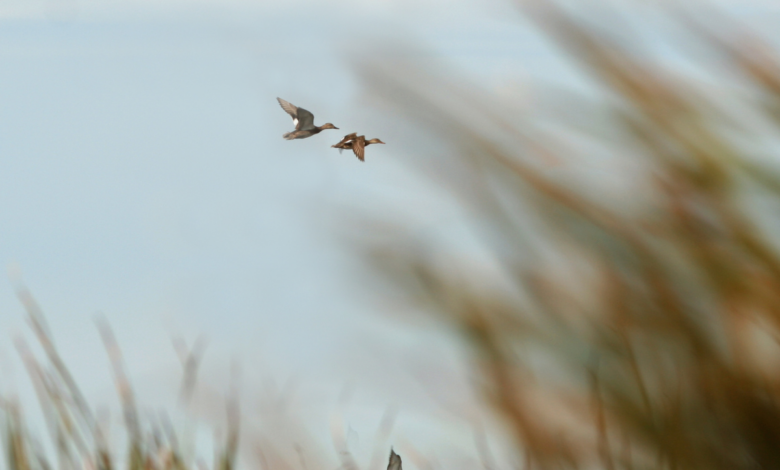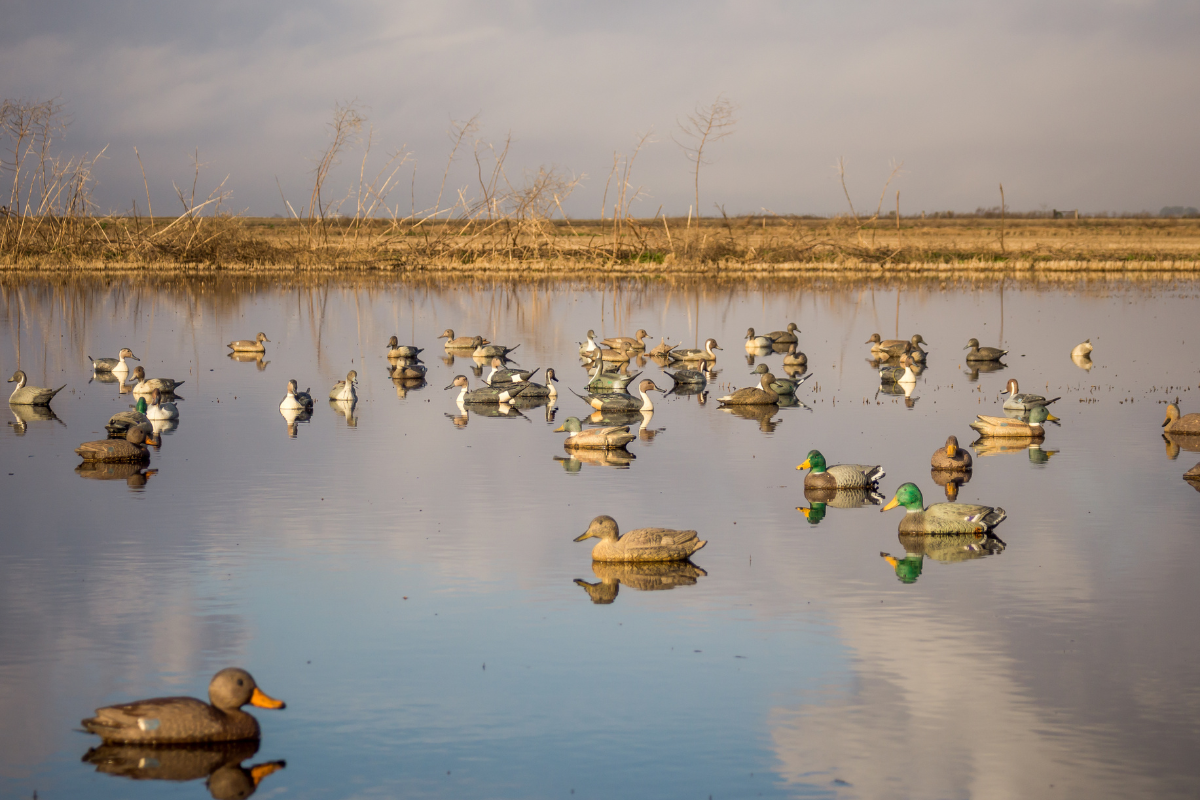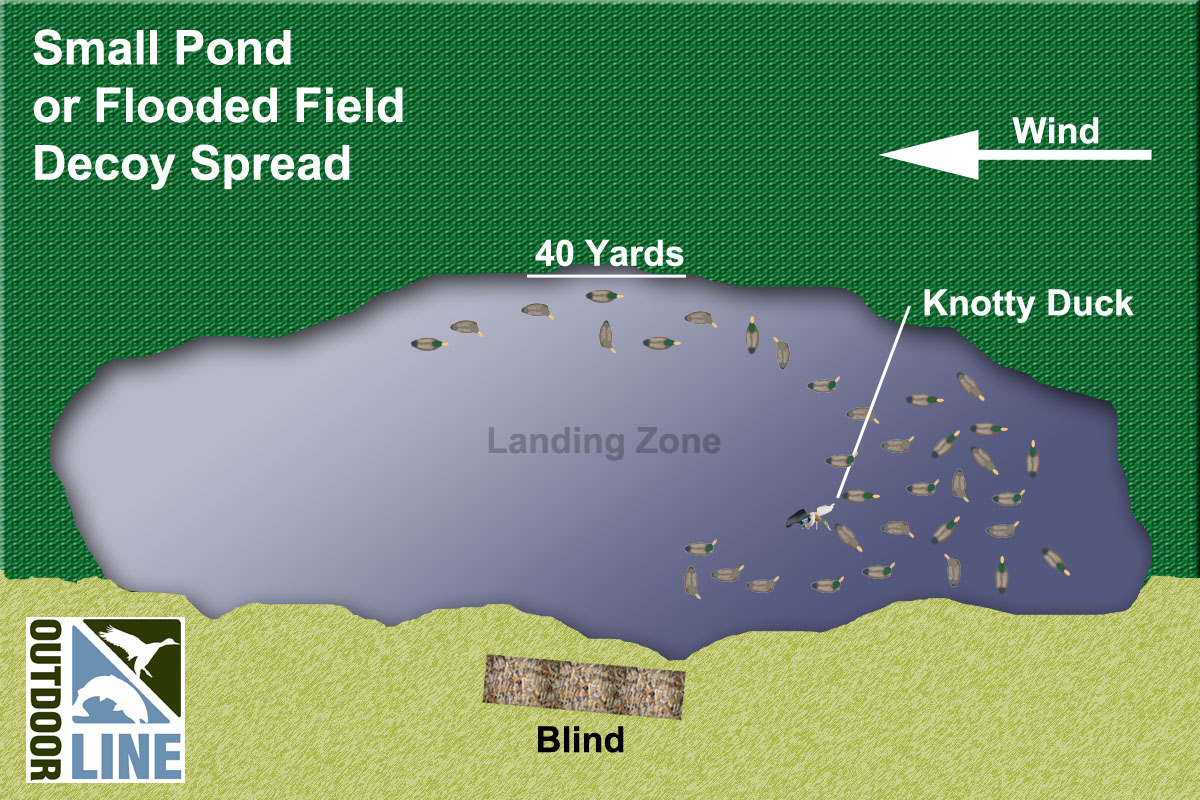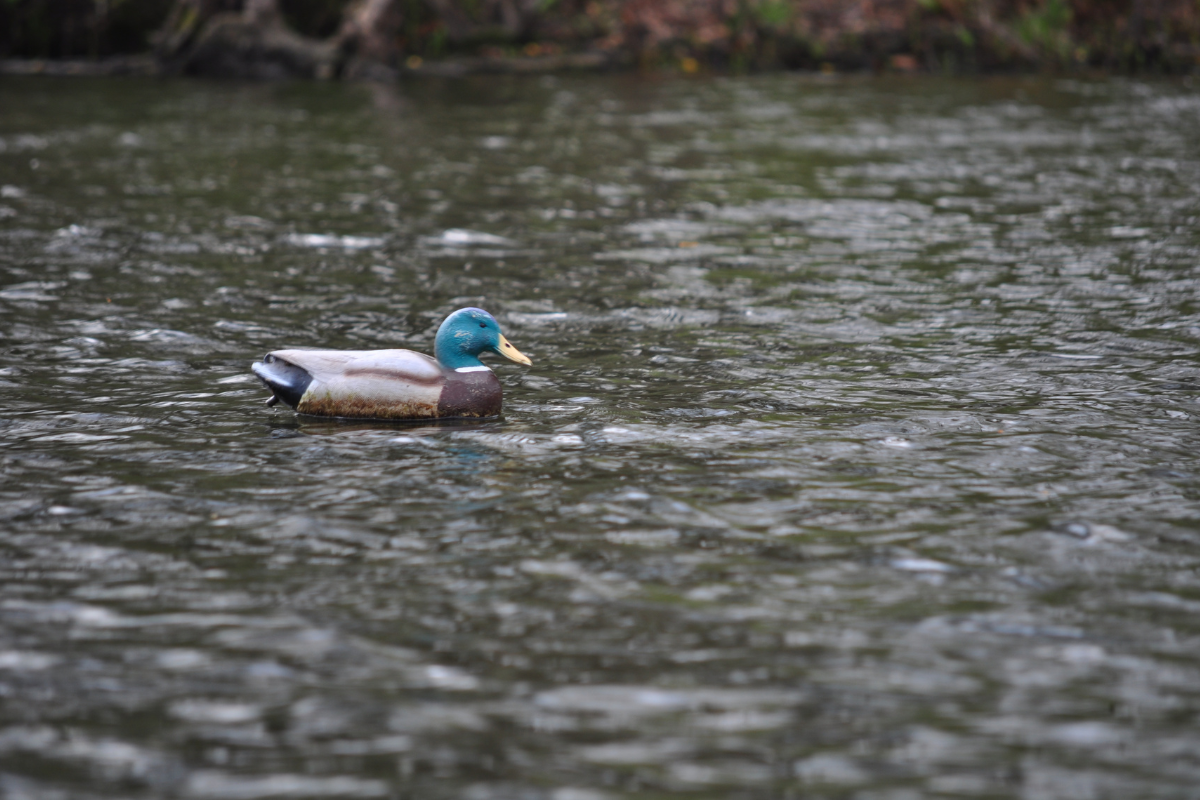7 Best Duck Decoy Spreads You Need to Try Now

7 Best Duck Decoy Spreads You Need to Try Now
Letter patterns, bigger spreads, and tighter spacing are all things hunters have been trying since the dawn of time. Everyone and their brother has a strategy and thinks they have the best duck decoy spreads and methods for getting ducks to commit to the spread.
That said, conditions, seasonality, and a number of other factors will impact the success of your spread and there’s nothing you can do but accept it and adjust.
In this guide, we’re going to take a look at the most popular duck decoy spreads based on feedback I received from a dozen different experts across the country.
1. Shallow-Water Dabblers
I start rolling out this spread every early season when targeting local mallards, black ducks, teal and woodies in small marshes, creeks and backwaters near me in upstate New York. The key benefit is it’s quick and easy to set up as I often access these spots by foot or small canoe.
I’ll run 2-3 dozen decoys divided into species groups – mallards and teal paired up, woodies off doing their own thing as they tend to, and black ducks separated since they never seem to intermingle. If I’ve spotted early migrators like wigeon or pintails, I’ll throw out a small group of them too.
The only drawback is this spread can be limiting if the birds aren’t flying the areas you expect. But it serves me well on those early hunts before the big water sets up later in fall. I always include a spinning wing decoy for added visibility and motion. Just don’t put it right by your blind.

2. Green-Timber Greenheads
When autumn rains flood the rivers and timber holes of Missouri, this is Brent Frazee’s go-to spread for mallards and woodies. You only need 2-3 dozen decoys, so it’s quick to set and easy to pack in. He’ll focus the bulk of the spread on the upwind side to pull birds over the trees and back into the hole on their final approach. Just remember to leave an opening on the downwind side so they have a spot to land – around 6 decoys opposite the main group works nicely.
The drawback hunting flooded timber is that ducks can drop randomly into the trees before they fully commit. Be ready to adjust the spread or even relocate your blind if they start hanging up out of range. But when it’s firing, the Green-Timber Greenheads will have you limit out in no time.
3. Prairie Pothole Puddle Ducks
In the pothole country of North Dakota, hunter Jack Riganessi learned that bigger isn’t always better – especially on smaller waters. This simple rig for mallards, pintails and puddle ducks has worked magic for him. Place just 2 dozen decoys tight to the bank where your blind is, leaving most of the water open. Pothole ducks will buzz the far bank then drop into the landing zone just short – but still in range!
The only negative is that on bigger waters, the birds may flare when they don’t see the huge mega-spreads they’re accustomed to. But on those little slews and sloughs, this tight set-up builds their confidence to commit. Remember to set up where scouting shows the birds already want to be.

4. The J Spread
My number one go-to for hunting divers – I orient the long tail of the J off at a 45 degree angle to pull birds across my shooting lane parallel to the bank. Canvasbacks, redheads, goldeneyes – they all get sucked into this deadly spread thinking they’re joining the party. I’ll pack the decoys tight on the inside bend upwind of the blind.
The J does require some specific conditions to really shine. It’s designed for shore hunting situations with a steady crosswind, so your results may suffer on windless days or hunting open water. But in the right habitat with a good stiff breeze, I’ve yet to find a more effective decoy spread for targeting divers along river banks, backwaters and coastal marshes.
5. The Fishhook Spread
Also known as the J Spread, this is my killer late season rig for wary Canada geese in both field and water settings. I arrange Flocked Canada goose shells and floaters in the classic fishhook pattern and sit right at the bend. Approach paths vary so an inside position allows shooting no matter how the birds try to join the flock.
You must set this spread away from any tall cover, as geese will flare if they have to pass over bushes, trees etc when entering. Give them an open runway along the shank then let them turn into the hook opening for a close look. Patience is key as pressured geese may circle numerous times before feet-down. But once they commit, it’s lights out!
6. The Double V Spread
When targeting mixed flocks of puddle ducks, this Double V design produces limits of greenwing teal, gadwall, widgeon and more. The first teal-mallard filled V goes slightly upwind, then I set a second one 10-20 yards back. Dropping singles or pairs between the legs leaves enticing holes for ducks to finish into.
I’ve found the V pattern naturally funnels ducks into the landing pockets created along the spreads angles. Weather conditions can impact it’s effectiveness though, especially direct crosswinds blowing into the Vs that hamper access. But on those perfect days with a light breeze quartering the bank, it’s a deadly duck attractant!
7. X Decoy Spread
For my late season in PA, pressured puddler rig, the X Spread adds randomness that appeals to wary ducks. Simply toss out mixed mallards, gadwall, wigeon – whatever species are present – in a rough X alignment. Leave the intersections of the legs open as your landing zones then sit right in one.
I’ve had great shoots on windless days by adding a jerk cord rig with multiple decoys to the landing hole. But high winds can play havoc with the spread alignment and reduce it’s realistic look. The X truly excels once the birds get educated, so I break it out for those stale late season hunts when all else fails to finish birds.

Additional Considerations for Duck Decoy Spreads
As tempting as it is to just toss out dozens of blocks and hope for the best, choosing the right decoy rig at the right place and time is key to hitting limits instead of hitting your head in frustration. Here are a few other factors we as waterfowlers need to take into account with the spread.
Proper Selection
First is proper decoy selection for your chosen spot. It does no good running a massive spread of divers like cans and redheads on a local pond or slew that only sees puddle ducks. Choose species and even sex appropriate decoys that match what your scouting shows is utilizing that area. Sure throw in some mixed confidence decoys too – but make sure your spread first matches the primary birds you expect to encounter.
Adapting Based on What the Ducks are Giving You
Second is being adaptable and versatile in setup options. Being able to transition a rig from a J hook to a Double V to an X Spread means carrying extra decoys and anchors. But that flexibility lets you adjust to changing wind, weather, and even hunting pressure dynamically. Instead of your tried-and-true rig flaring dozens of ducks because natural movement shifted, you can remix the spread as needed to keep the birds committing.
Spacing and Placement
Third is paying close attention to spacing and placement of decoys for maximum efficiency. Many new duck hunters make the mistake of setting too many blocks too closely together in a chaotic mass that actually puts ducks on high alert.
Make your spread mimic nature with logical spacing – diving ducks in a line, puddlers in pairs and trios, small flocks mingling separately, etc. This adds increased realism and limits unnatural direct attention to your position.
Finally, consider how best to use spinning wing decoys and other movement within your spread. These can pull ducks from amazing distances, but realize that overt motion close to blinds will bust more hunts than it helps if birds flare from unnatural setups. Controlled, intermittent motion from properly placed wings or jerk rigs give passing ducks another reason to join the party.
Final Thoughts
Rolling out the right duck decoy spreads is essential for bagging your limit but you don’t want to be married to one of many options. In this guide, we covered what I believe to be the most common and reliable spreads based on feedback and insight from a number of seasoned hunters.
Good luck!


